Croton wigginsii, Wiggins Croton
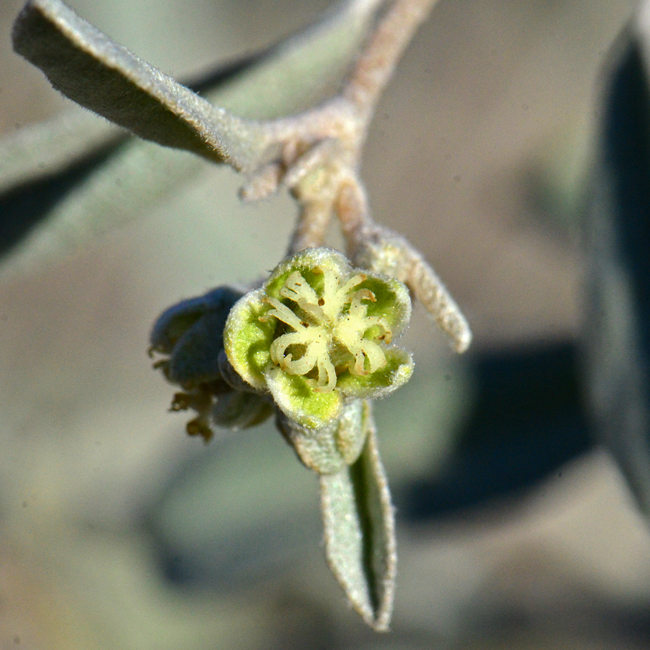
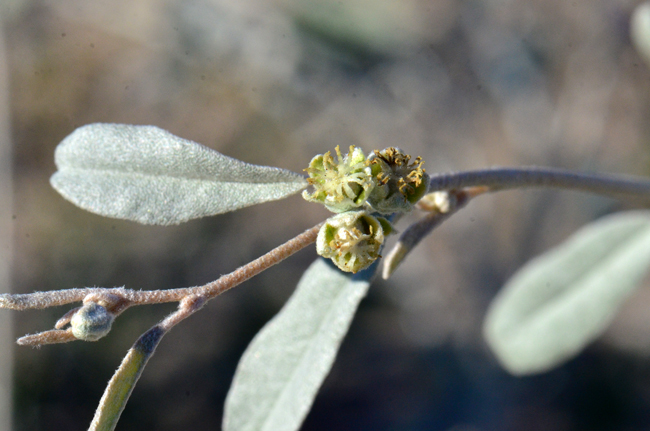
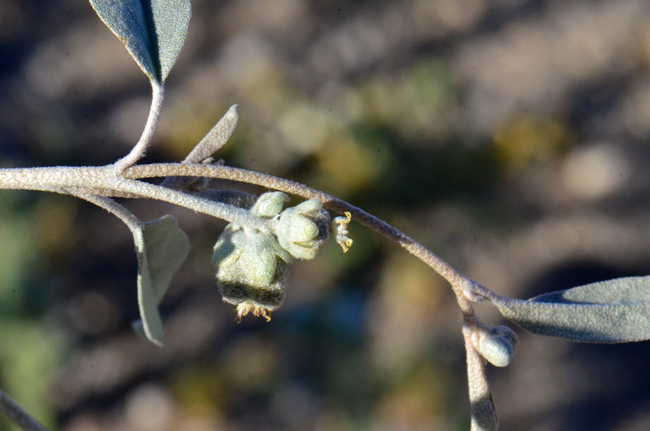
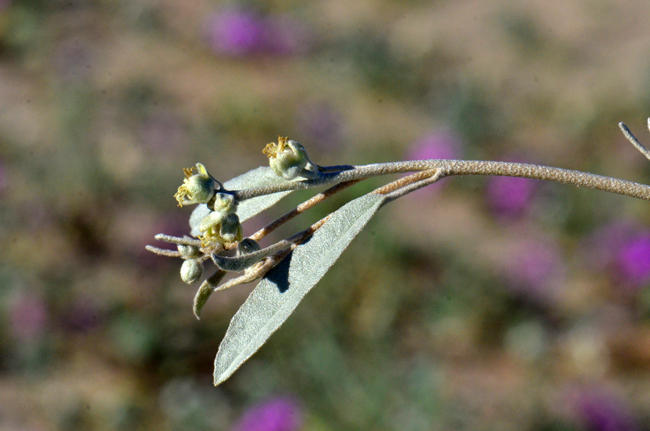
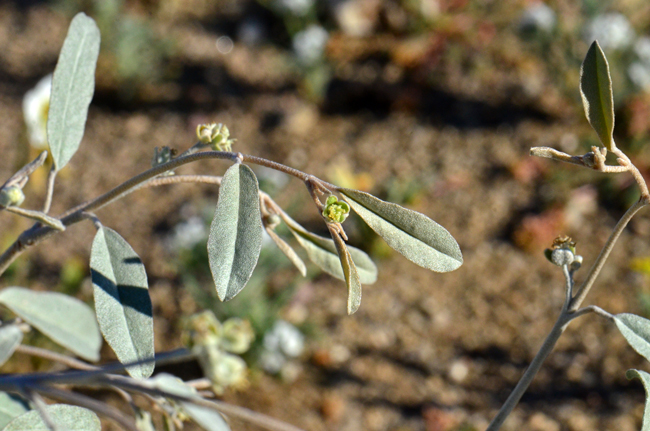
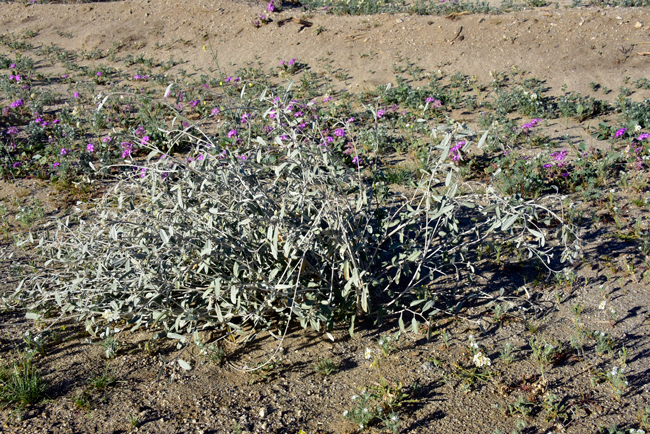
Scientific Name: Croton wigginsii
Common Name: Wiggins Croton
Also Called: Dune Croton
Family: Euphorbiaceae, Spurge or Euphorbia Family
Synonyms: ()
Status: Native
Duration: Perennial
Size: Up to 3 feet (1 m), usually shorter.
Growth Form: Shrub or Subshrub; stems generally erect.
Leaves: Gary-green, leaves simple, margins entire; alternate, short petiole, leaf shape variable from narrowly elliptical to linear-oblong; hairs generally stellate.
Flower Color: White or cream colored "flowers" on a raceme; plants dioecious, pubescence of stellate hairs or scale-like; fruit is a 3-lobed or spheric capsule
Flowering Season: February or March to May - photos above taken in March in Imperical County, California.
Elevation: Sea level to about 300 feet (100 m) in California and Arizona.
Habitat Preferences: Sandy areas and sand dune communities.
Recorded Range: Wiggins Croton is found mostly in Sonora, Mexico from Guaymas north into the United States. In the United States it is limited to the extreme southeastern corner of California in Imperical County and southwestern in Yuma County, Arizona.
North America & US County Distribution Map for Croton wigginsii.
U.S. Weed Information: No information available.
Invasive/Noxious Weed Information: No information available.
Wetland Indicator: No information available.
Threatened/Endangered Information: In the State of California, Croton wigginsii is listed as rare with a California Rare Plant Rank of 2B.2 (rare, threatened, or endangered in CA; common elsewhere);
and has a Rounded Global Status of G2, Imperiled by NatureServe Explorer, An Online Encyclopedia of Life.
The genus Croton is a diverse and complex taxonomic group of plants ranging from herbs and shrubs to trees.
In the Southwestern United States: Arizona has 10 species of genus, California has 3 species, Nevada has 2 species, New Mexico has 7 species, Texas has 24 species, Utah has 12 species. All data is approximate and subject to taxonomic changes.
Comments: Wiggins Croton appears to be restricted to sandy areas particularly sand dunes in Imperial County, CA., and in Yuma, County, Arizona. Plants in photos above were taken in March in Anza Borrego from which there is no listed distribution.
According to a 2011 study in Kenya, apparently Croton nuts, (C. megalocarpus) are a more economical source of biofuel than Jatropha.

